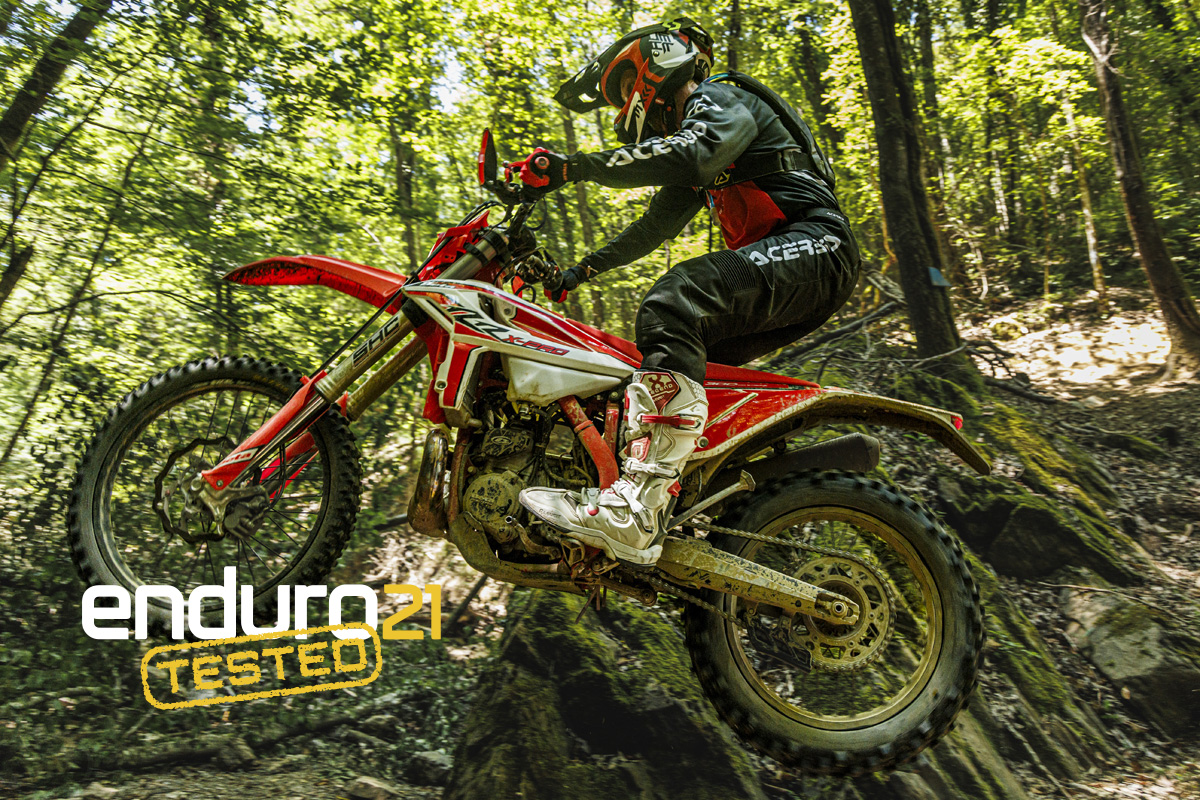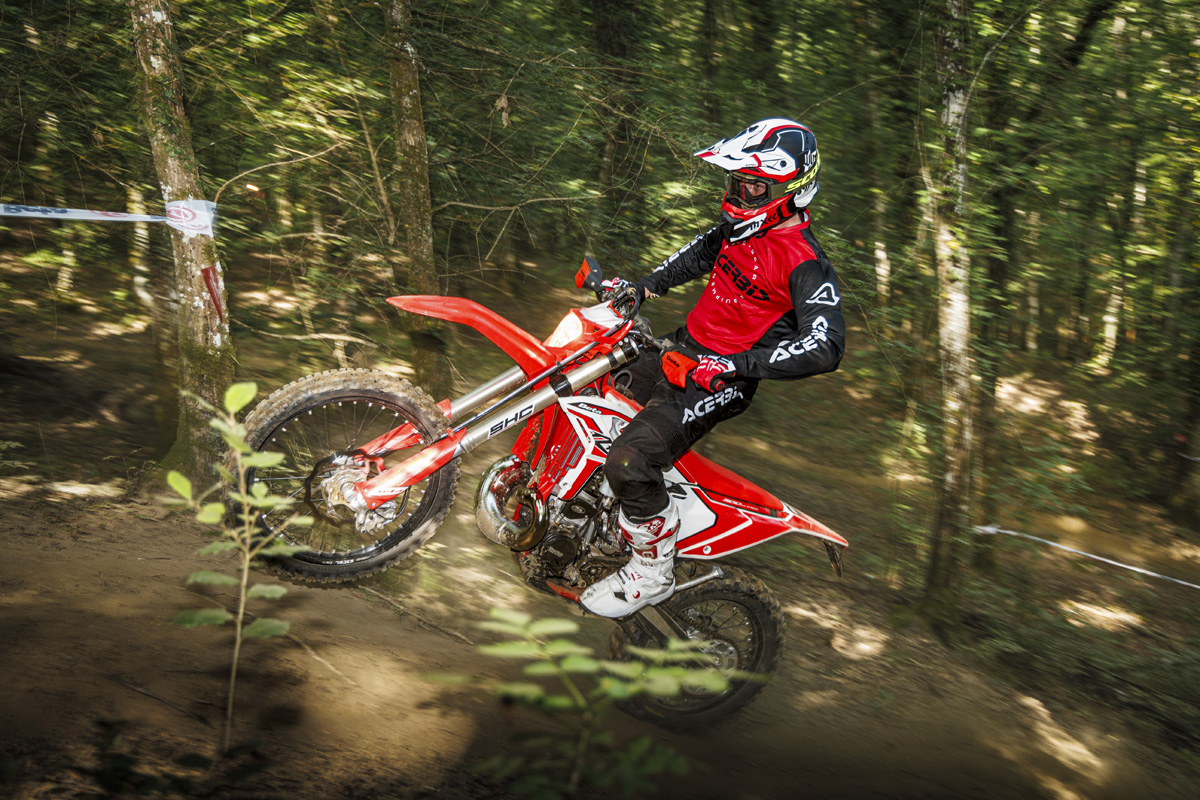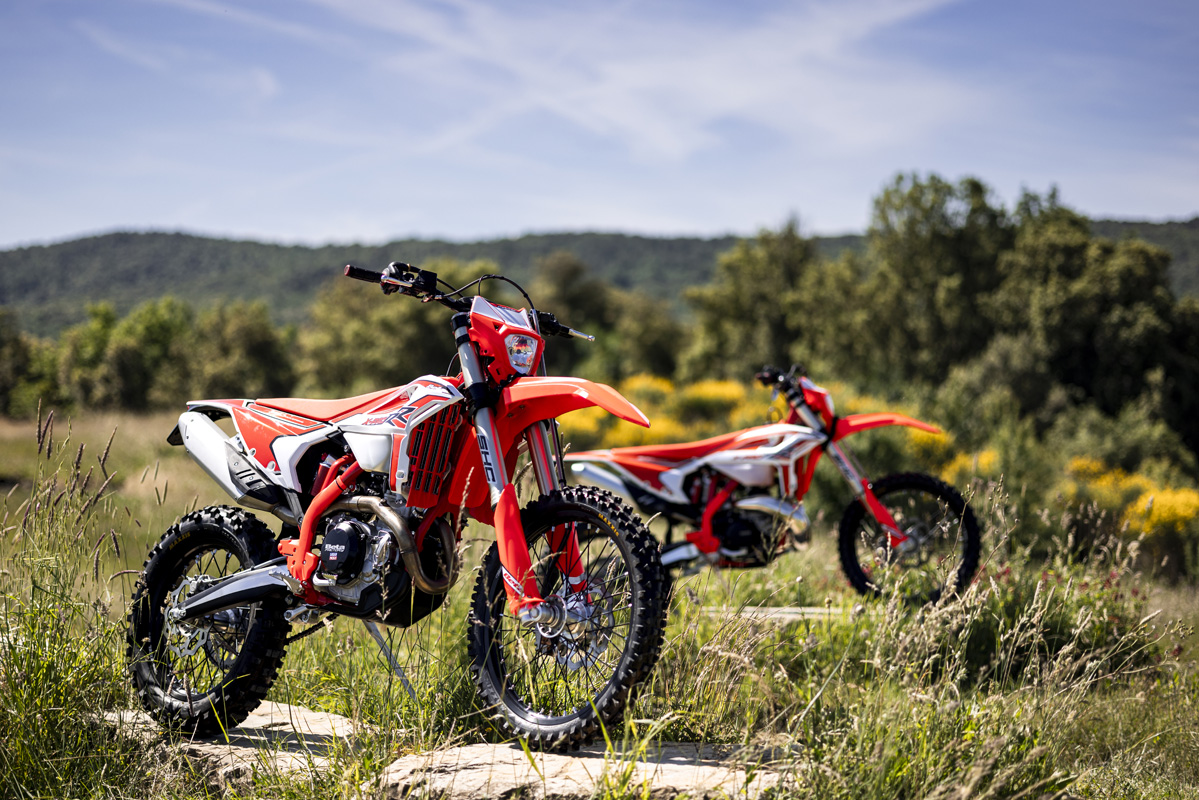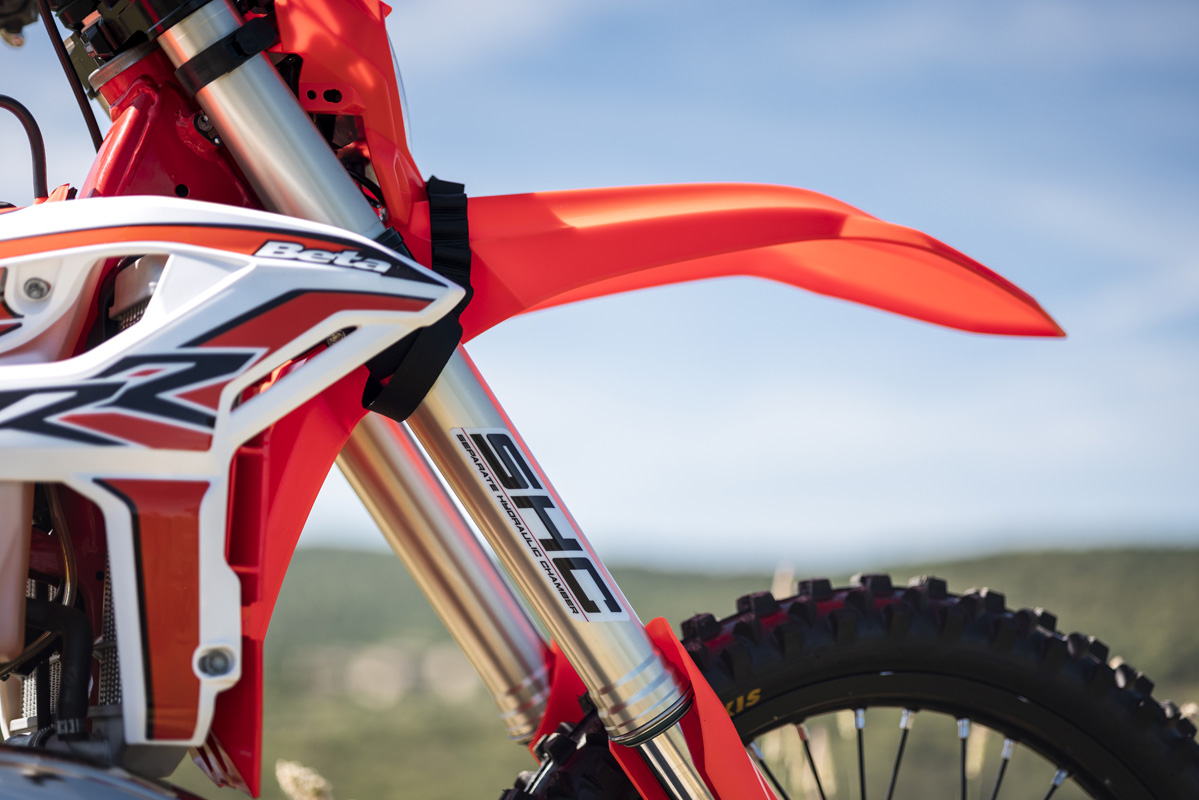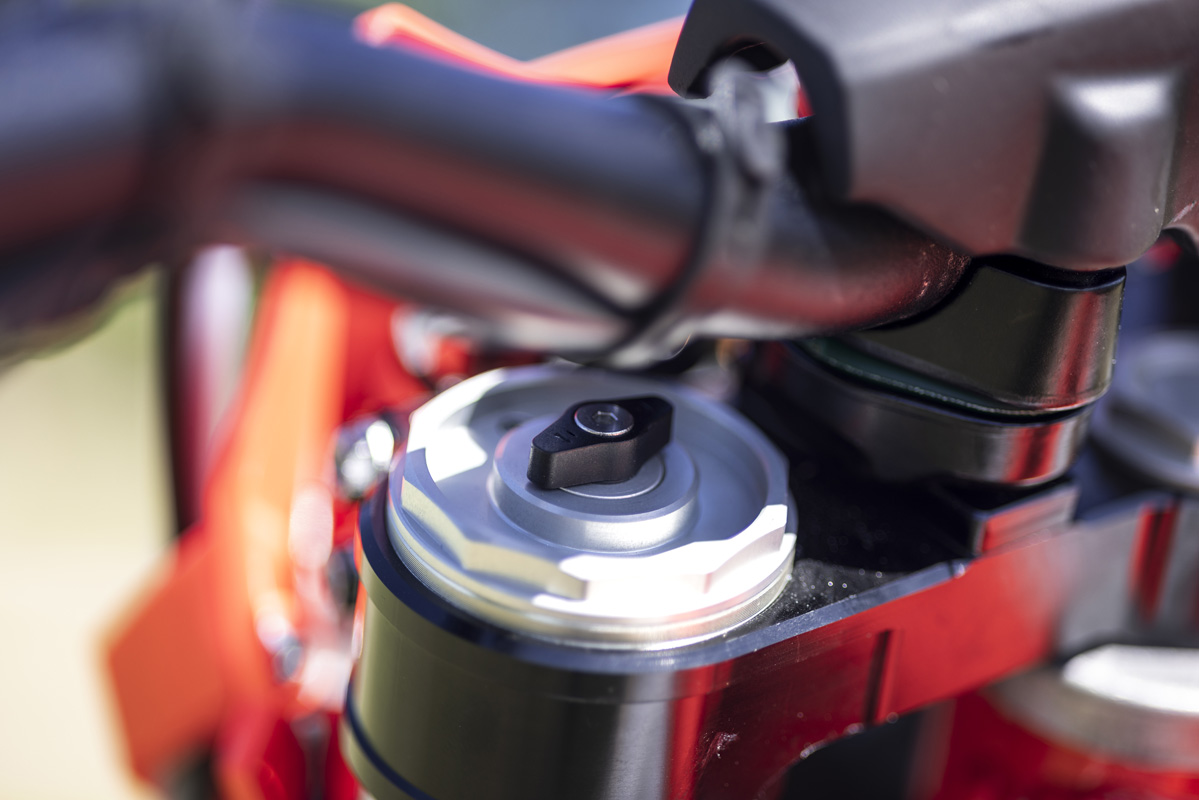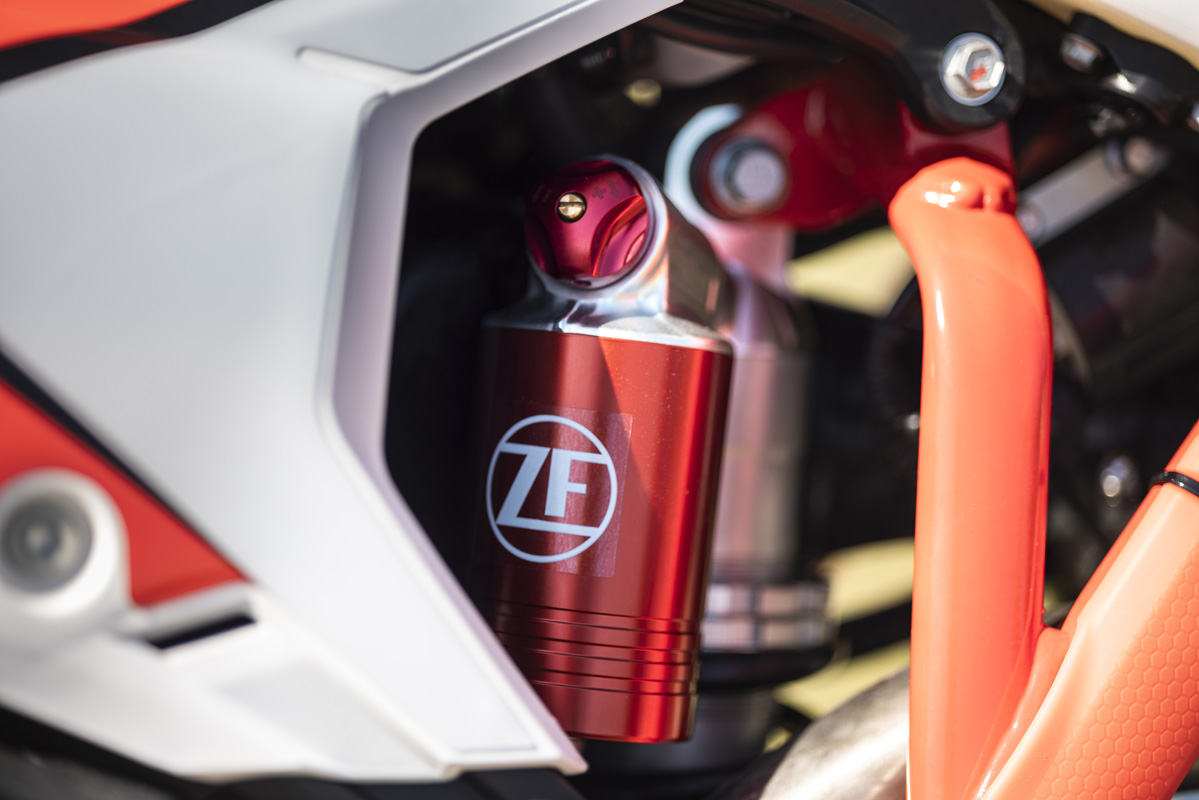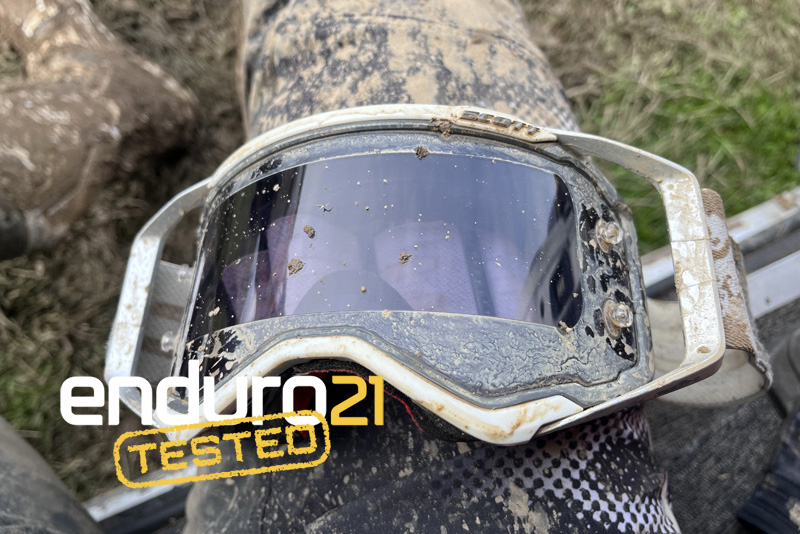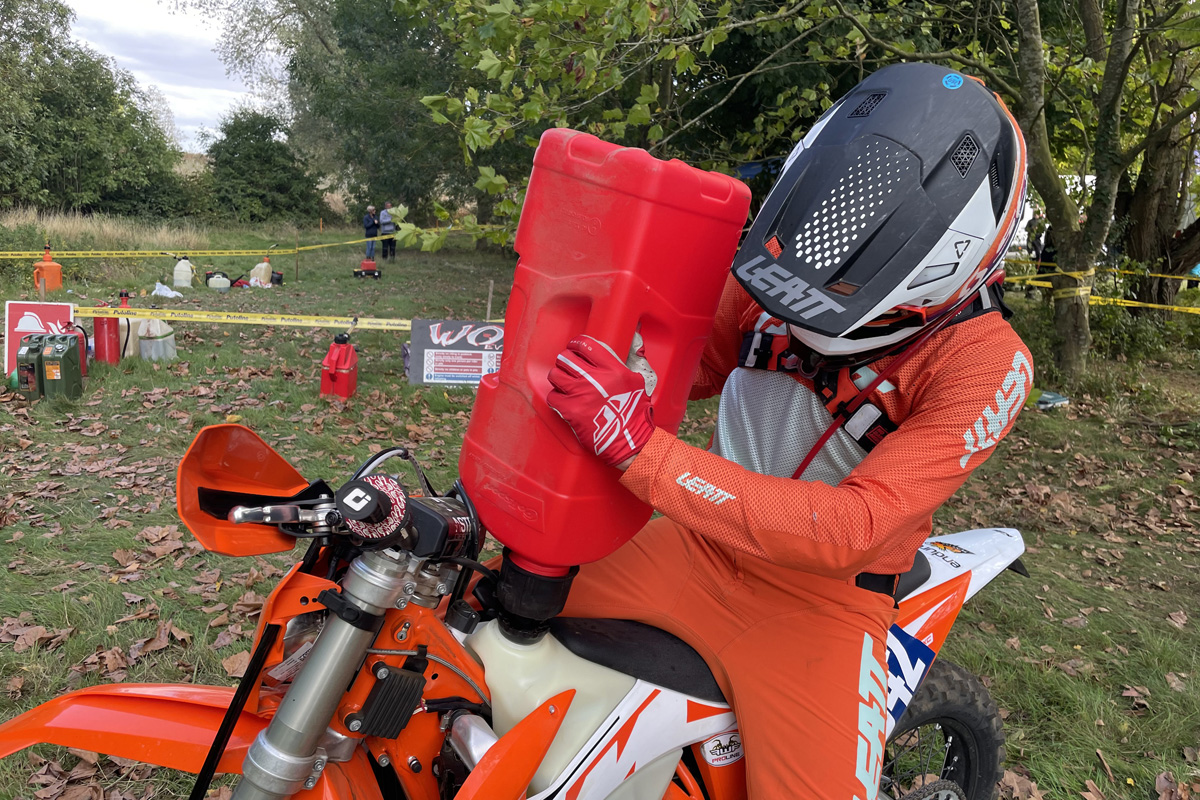Tested: 2025 Beta X-Pro Enduro Riding Impressions
Enduro21 test rides the 2025 Beta X-Pro Enduro model range, a seven-strong two and four-stroke line-up bringing more to the party than the old RRs and offering themselves up as firm rivals for the EXC range.
What’s in a name? In the case of Beta’s new X-Pro enduro model range quite a lot. You’d be excused for thinking the new moniker is skin deep with some new colours, a fresh logo on the side panel and little else.
While a lot of components remain the same as the now defunct RR models, there’s more to it than meets the eye and the change in name also brings with it a change of emphasis from Beta on their whole enduro range.
Building a better Beta enduro bike
Beta’s aim with the X-Pro is to create an EXC-beating, do-it-all off-road bike range. The X-Pro line-up of 125, 200, 250 and 300 two-strokes, plus 350, 390 and 430 four-strokes, is among the most comprehensive out there.
In an attempt to clarify the differences between their three enduro lines – the novice and trail-friendly (also hard enduro happy) X Trainer, the new middle ground X-Pro and the higher-spec Racing model (due around September ‘24) – Beta are defining their range better to suit you and your needs from a bike.

By now we know the big-selling X Trainer is soft, easy-going, practical, cheap and very cheerful. But its soft nature has limitations and many owners automatically add upgrades to the X Trainer, particularly better suspension.
Beta knows this and they also know lots of people buying the high-spec Racing model, are out-doing themselves based on a belief they need the KYB suspension.
Enter the stage the new X-Pro with a remit to fill the gap between the X Trainer and Racing bikes more definitively. The basic chassis and components are the same as the Racing model but the X-Pro has upgraded ZF suspension (compared the RR models), more emphasis on all-round rideability and faces the reality it has to be a better bike to bemore of a rival for the EXC range.
Does the suspension work?
The headline act in the X-Pro range is new ZF suspension and this is probably the crux of the matter for everyone asking us if it was any good. Combined with a shorter shock length for a lower seat height, the stiffer racing model-derived main frame – with increased strength and reduced flex they say – the new ZF SHC front forks were a big focus of attention on this launch test.
Seeing ZF on the side puts people off, partly because the previous generations of Beta enduro models haven’t been good enough. But things have changed.
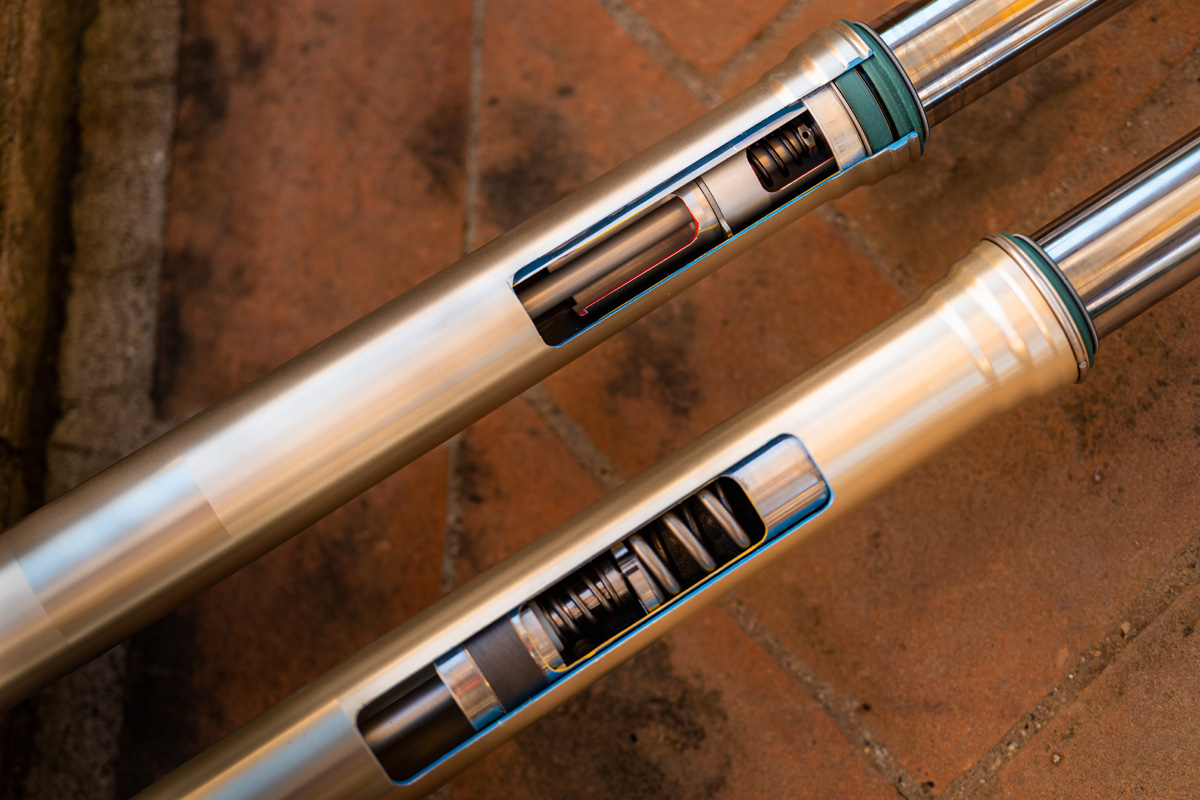
The new forks, with separate leg internals – spring one side and an open cartridge damping unit the other – has questions to answer from all the doubters.
It is fully adjustable with some fork top hand clickers and has much better adjustment when you turn those clickers. The new set-up, which is quite unusual in enduro, although it is common in trials, where Beta has its origins, also reduces weight by over 250 grams they say affecting handling for the good.
More control from the suspension and better tracking
From the seat of our pants, the new suspension gives the X-Pro more agile steering and with better control and damping when compared to the previous RR models.
Our initial feeling when jumping on the X-Pro’s was how soft it felt. A 20mm lower seat height is thanks to suspension changes (not the new seat) but the 250 we got on first felt more accessible and easy straight away because of an initial drop of the suspension stroke.
Here’s the thing though: that initial soft feeling gets held up and doesn’t continue to the stoppers as soon as you hit anything harder. Thanks to the progressive suspension stroke, the control lacking on old ZF suspension is there now with the new kit and that is a significant change.
A bigger piston and more control from different shim stack is the internal reason if you want a better explanation.
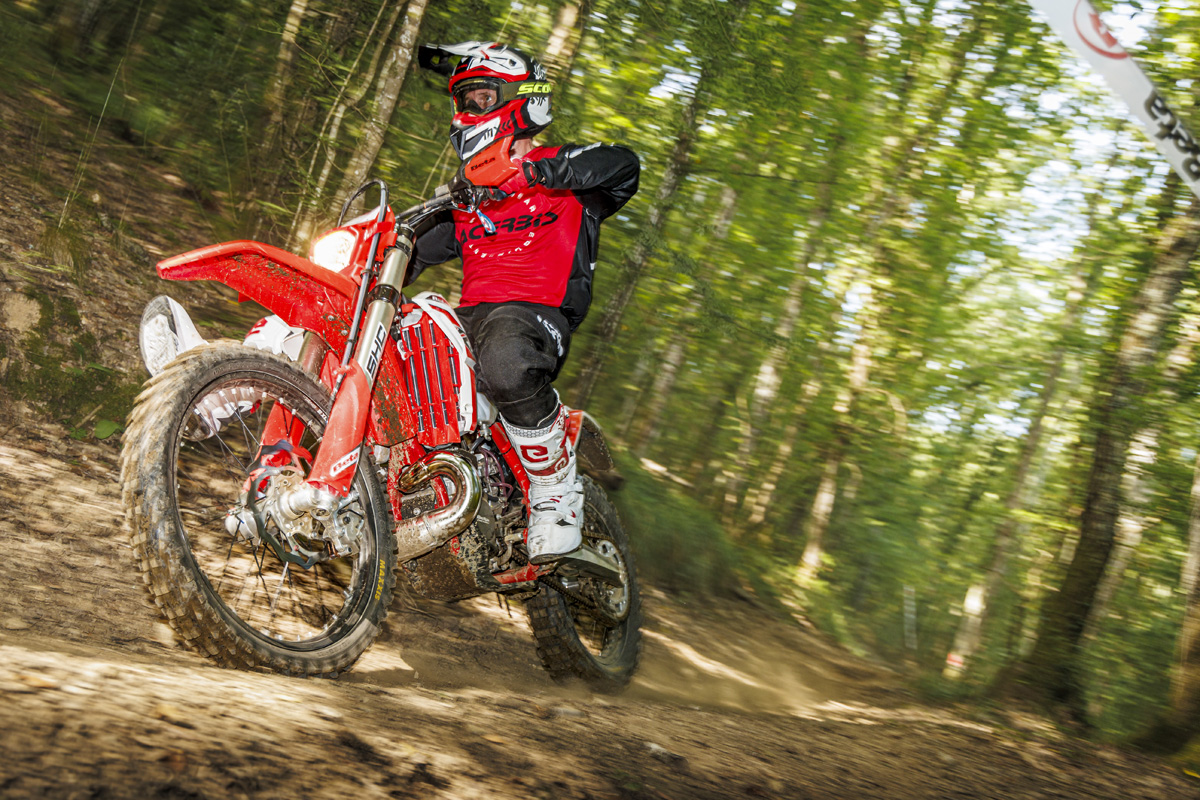
“Standing up to a bit of punishment”
The new, shorter shock – responsible for the 20mm lower seat height – feels more stable too and helps you stand on the pegs and go faster through the trees. It’s less prone to bouncing, rebounding and getting out of shape and is therefore easier to live with.
A sweet section of test loop we were doing for some photos erupted from a first gear corner then quickly went up through the gears, dodging trees, to arrive at a dry riverbed strewn with rocks.
Two laps in and the new suspension was happy to accept a bit of bravery. Jumping into the stream, carrying speed, if this were an enduro test, you’d be saving loads of time thanks to confidence that the suspension is up to the job, can stand up to a bit of punishment.
We’re not going to say it’s the same as the KYB kit on the Racing Beta’s or Sherco enduro models we tested last month for example – though we’d love to test them back-to-back – but the first moments of realisation this is a bike stable enough to cope with things better brought a, ‘huh, I didn’t expect it to do that’ moment: the Beta X-Pro’s new chassis and suspension can handle going faster.
What type of enduro is the X-Pro for?
A lot of the talk in Beta’s marketing and presentation at this media launch in Italy mentioned Hard Enduro. It was a little confusing in a way; just what type of enduro is the X-Pro for?
Having ridden them all one thing’s clear: the two-strokes, especially the 300, are good to go in hard enduro and for our money would easily go straight from these woods in Tuscany over to Romaniacs. The only standard fitment parts missing would be a fan and a kickstart…
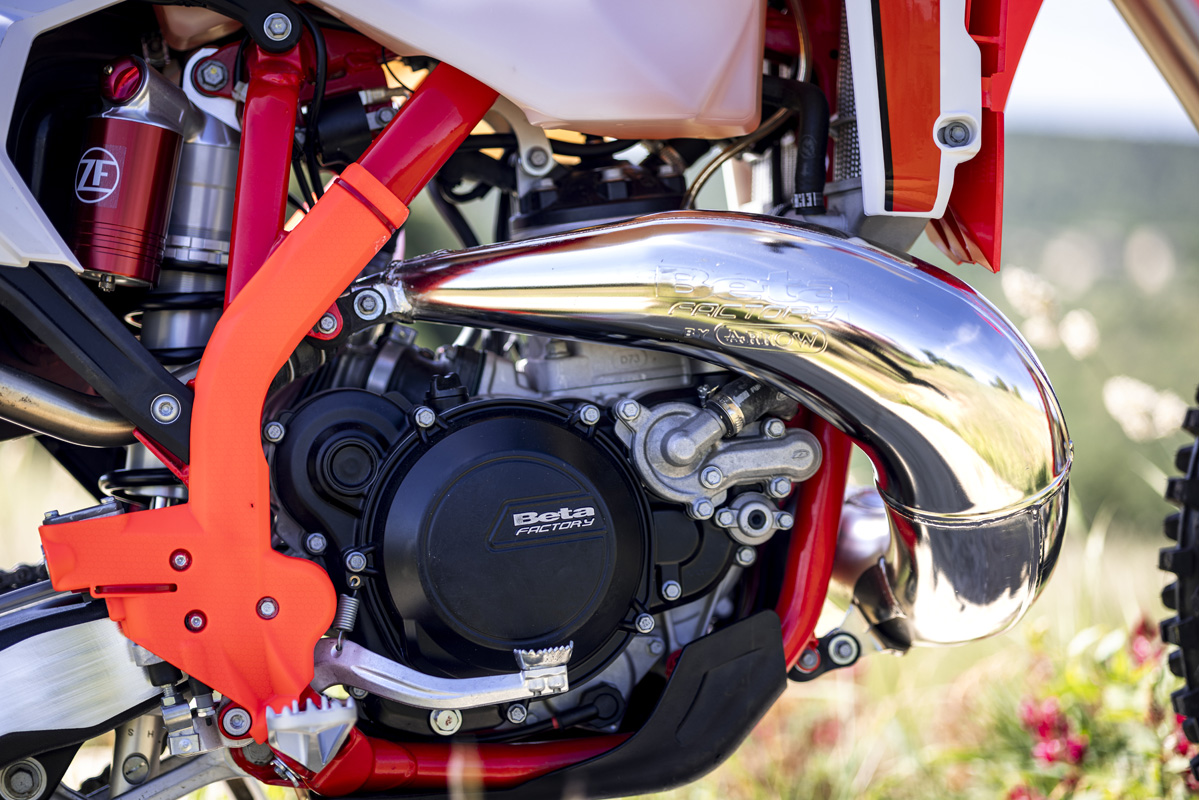
With the smooth and torquey 300 (actually the 250 is more torquey than you think now also), a consistent and light diaphragm clutch, good feeling from the Nissin brakes and that new lower seat height, these 2T X-Pros lap up any kind of extreme or technical riding.
Our test course had a nice section in a steep-sided river which had some classic hard enduro hill climbs up one side. Firing up a long climb in third or switch-backing left and right on loose, leafy ground in first gear felt like Romania and it was easy pickings on the 300 and 250, even the 200 to be honest.
We take this as proof of the new X-Pro chassis, suspension and engine tune being a significant improvement over the old RR model. In hard enduro you need things to be in your control. You need a sturdy chassis, sorted suspension and a strong motor for speed. But you also need a docile beast at others. If a bike can do both like this then it’s a good one.
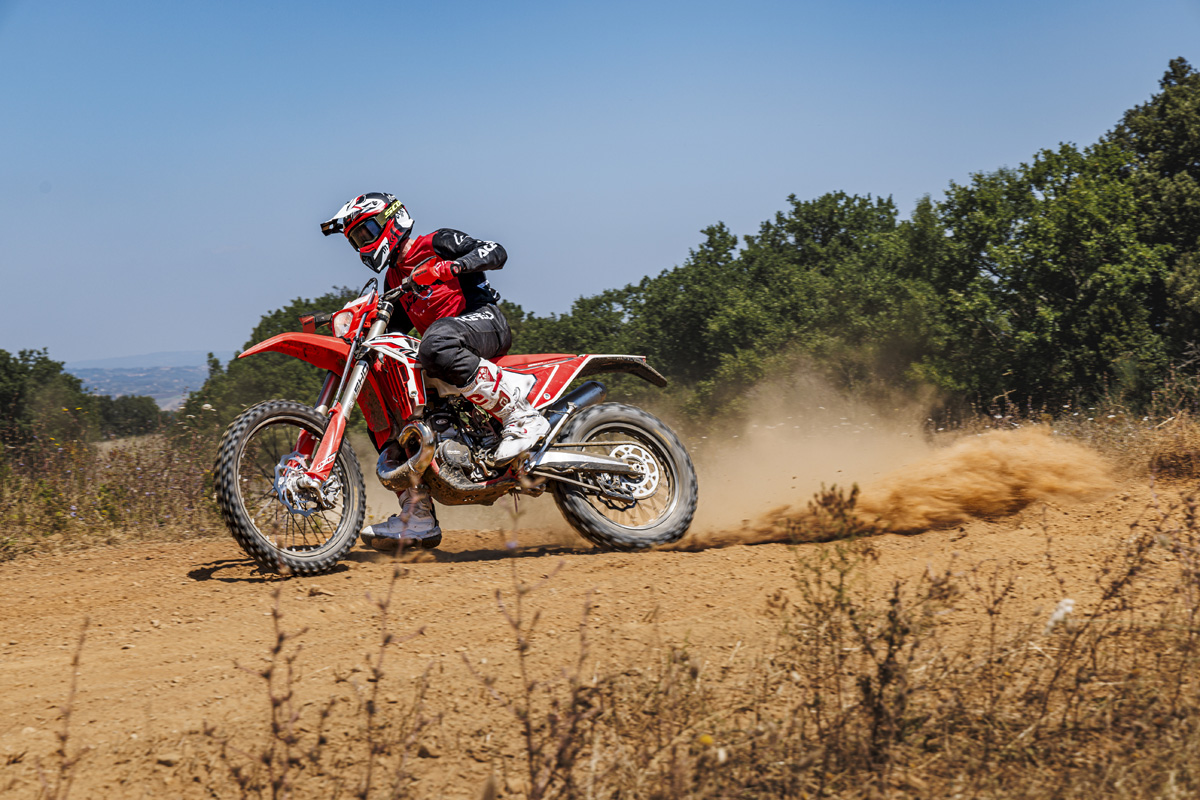
Soaking up classic Italian cross test
Contrasting conditions in the long grassy cross test at the launch showed the X-Pros are fit for purpose there too. The only proviso was the super-hard tyre pressures set by Beta to avoid having to repair punctures making confidence difficult.
They didn’t fit mousses and with fairly hard standard Maxxis enduro tyres as standard, it was a choppy and harsh ride especially on the horrible off-cambers.
Even so, we tested the entire X-Pro range around the cross test track, taking them out back-to-back for maximum feel for the differences between them all.
The main takeaway from that 30-minutes well-spent was the new suspension clearly works better and, with a few tweaks of the settings from factory enduro team manager Fabrizio Dini, they behaved themselves enough for good feel, despite the tyre issues on the hard-pack ground.
The biggest takeaway from this was a consistent alert feeling from the front of the new chassis’, particularly the two-strokes which carry less weight on the front – more on that below.
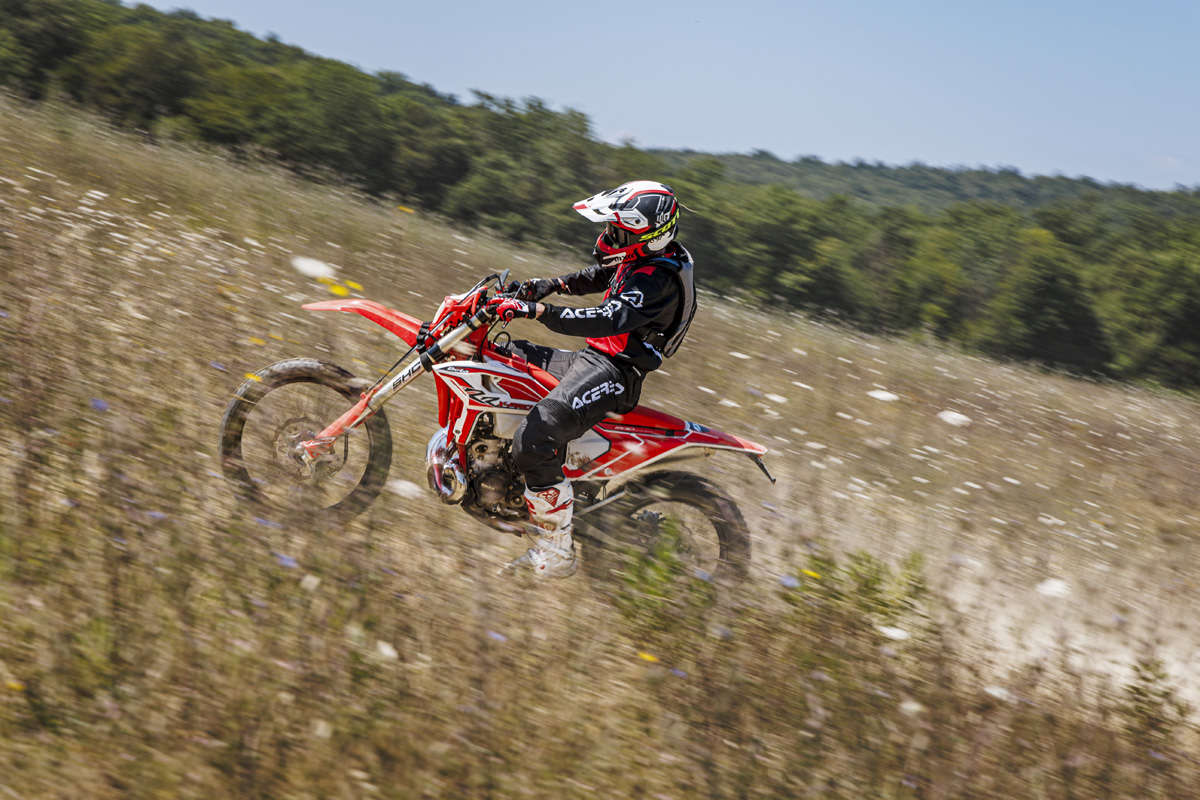
There’s a good feeling from the Nissin brakes too where a new rear brake has larger volume for consistency under hard use they say.
Anti-vibration handlebar mounts also aim to reduce rider fatigue, but we admit scepticism before this test. In our experience they kind of work on a trail but in an enduro test what they add in anti-vibes, they can take away with flex.
Not so the XTrig FlexFix isoelastic mounts fitted as standard to the X-Pros which, despite the new Racing model-derived stiffer chassis, soaked the choppy test and horrific camber bumps well and without bar twist.
Two is better than four
For our money the two strokes are better than the four strokes in the X-Pro range and that’s simply because one is easier to ride than the other.
While we gelled quickly with the two-strokes, felt encouraged to go a bit harder and faster, loving the new chassis’ front-end feel, the four bangers feel a bit heavy over the front and truth is we tucked the front countless times during the day on the 350, 390 and 430.
The Beta 4T models clearly have pedigree on a racetrack with Steve Holcombe claiming the EnduroGP crown in 2023 on the 390, a bike which Nathan Watson is now riding and grabbing podiums with this season.
But down the scale to mere mortal riders like us and the new X-Pro 4T bikes lack the positive gel with the bike we felt with the 2T machines. There’s also a still a debate to be had about the closeness of their capacities – why not spread them out a bit more Beta? A 250 and a 450 or 500 maybe?
The Beta 4T engines have a distinct four-stroke character about them in that closing the throttle throws weight forwards, a flywheel or crank effect if you like which acts like a brake, physically slowing the bike. And that, simply, makes them harder work to figure out and get the best from.
It’s partly a reflection of how impressive the 2T X-Pro models were but also because we’ve ridden pretty much every other four-stroke out there, we’ve got something to compare with here and something’s different about the Betas.
A KTM/Husky/GASGAS 350, the new Yamaha WR450F, the Fantic XEF 310 and Sherco’s SEF 300 are all cracking enduro bikes which are hugely versatile and popular across the world and they don't really have that issue anything like as much.
Beta’s four-stroke X-Pro models all have the same basic chassis, brakes, bars, grips, footpegs, seat, bodywork – it all feels more or less the same. But the feeling of inertia isn’t going away and if you’re a bit tired and shut the throttle into a corner as the back wheel catches a hole or rock, it really can fetch you off if you’re not ready for it. They need a different riding style to the two-strokes.

A few clicks of the fork settings thanks to Dini again and seconds later you have more support and a better feeling from the front with less inclination to dive through the stroke. Better tyre set-up would also help loads but we didn’t get that chance.
Take to the trail
Switch to a flowing trail however and the 4T pieces fit together much better. In a bid to try and get to grips with the 4T models better we spent time on all of them again on a big, long lap of the test facility (if you’re asking it was Agriturismo Viamaggio at Murlo, in Siena, Italy where you can visit, stay in awesome rooms and apartments, ride, even rent bikes and there’s a swimming pool).
The 4T models stand taller thanks to stiffer front springs compared to the 2T bikes, so your hands land higher and it feels less race-focused which some people will certainly like because it is more comfortable to stand up and ride for longer.
The Beta 4T engines’ also get increasingly torquey and useful through the capacity range and for all the above, there’s no ignoring that useful power makes for an easy ride with fewer gear changes. We’re all inherently lazy, right?

The four-stroke models have engine map switches and traction control (2T models get two maps only, no TC), which is easily changed on the fly via bar pad-mounted buttons. If conditions are slick (for us that was best tested in loose, rocky climbs) the softer rain mode helps gain traction.
After a bit of quality time testing them for longer, we get why Beta’s 4T models are popular with dual-sport and trail riders. Nice agile feeling chassis’, good controls and riding positions, nice light clutch lever and very flexible engines make for good trail bikes. With a better chassis and suspension now, if you liked them before we expect you’ll like them even more now.
Are there any engine changes over the RR?
Answer: not so many across the seven-model range with the exception of the 125 which has a new cylinder and exhaust valve control system modified with a new spring and a different calibration for the valve opening, making the engine more reactive and stronger through the revs.
The 300cc 2T model has a new piston derived from the RR Racing version which is lighter to reduce vibrations but faster revving they say.
It’s true to say the 300 from some manufacturers can be too much of a handful – witness the amount of riders who buy one and then fit softer heads and heavier flywheels. This new 300 X-Pro is going to suit more people and need less of those aftermarket products we’ll wager.
For our money the 250 felt more torquey too. Beta say it is unchanged but a quick chat with Dini again and he said they’d given it a bit more torque compared to the last time Enduro21 tested the RR models.
Whatever your preference for two-stroke or four-stroke, the X-Pro Betas reward the rider with a precise feeling for crisp, usable power and precise throttle delivery.
AOB – keyless ignition
A new thing on the X-Pro range, something which will be familiar to trials riders maybe more than off-road, are the wrist lanyards. The new models have magnetic toggles on the lefthand-side of the bars with a unique code and a wrist strap.
They are a safety device to cut the engine if you wear the strap around the wrist but it also acts as a security deterrent to prevent the bike being started without a key. Just remember to take it with you!
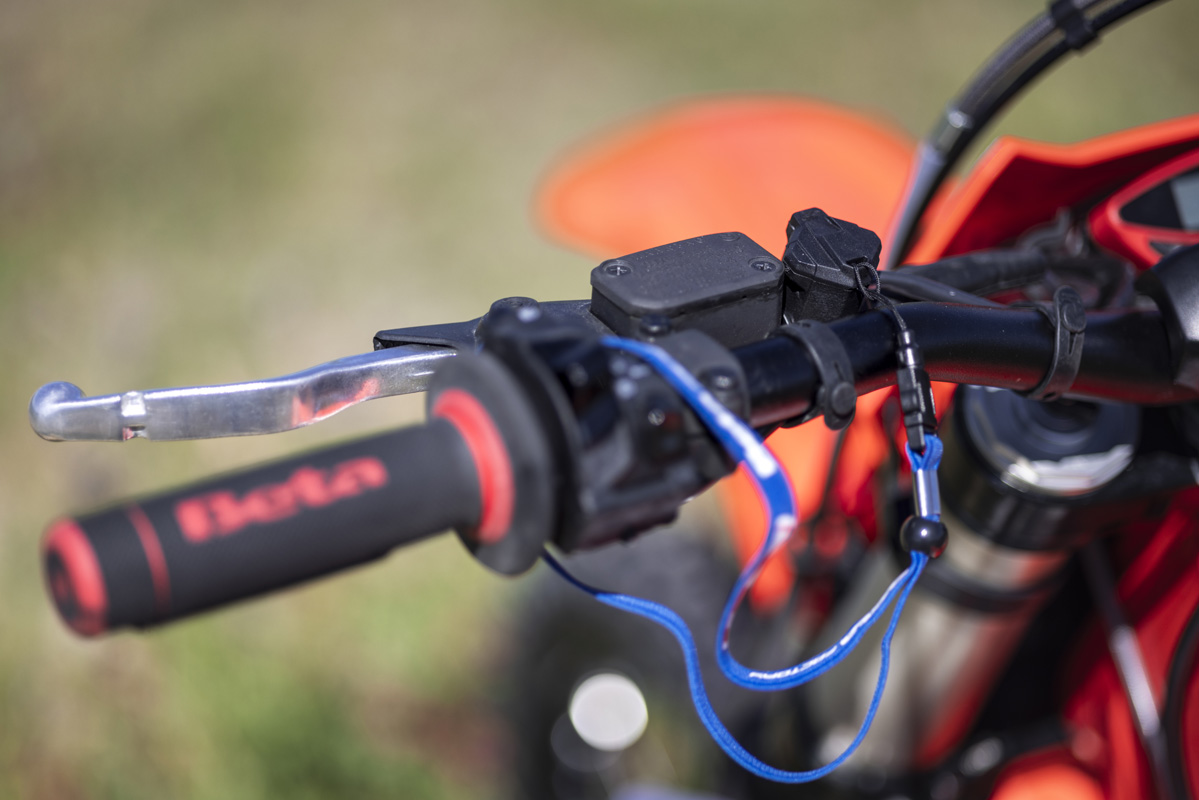
It’s a good idea as we know bikes can be stolen on the fly easily (thankfully rarely) and though we rode most the time without at this test, know from experience it makes little or no difference to use it on the wrist.
Verdict: Why you don’t need the Racing model anymore
Unless you are deadly serious, and seriously fast, Beta (along with most manufacturers) believe most people don’t need the Racing model. A lot of people see the bling of the high-spec KYB suspension and think they need it.
If you’re going to race EnduroGP, are at national level of racing, or Pro class at GNCC then sure, you need the best suspension and the X-Pro isn’t for you.
But for everyone else, the large majority of off-road riders who buy enduro bikes that is, the middle ground is where it’s at: a broad range of skills, an easy to ride bike, a range of capacities for you to choose from depending on your experience and type of riding. That’s why EXCs sell in such big numbers and that’s where the X-Pro is coming for.
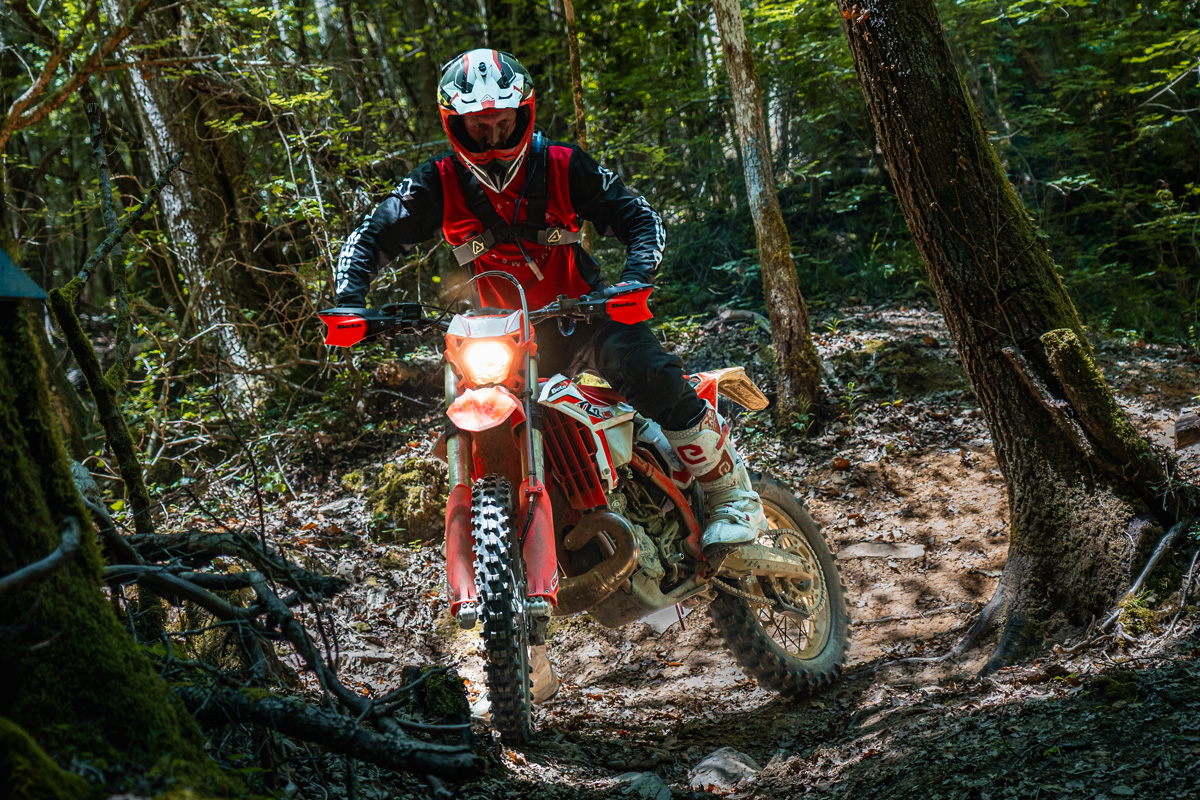
Meaningful changes to the chassis and suspension, quality components carried over, and encouragingly good engines add up to good all-round enduro bikes capable across a wide range of terrain. In a nutshell that’s exactly what we hoped the X-Pro range would deliver.
We came away from the test wishing we had a 300 to go to Romaniacs this year. It was really encouraging to ride and with the new suspension, the 250 ripped enduro tests too. And that’s not to mention the 200 which is a ripper!
While we couldn’t get over the four-stroke forward throw feeling (all detailed above), the last half an hour of trail riding brought home the value of those three 4T models and we’re sure with some fine tuning, the feeling would get better. For our money the confidence feeling isn’t there as readily as it is on the two-stroke X-Pros – or like it is with some other manufacturer’s bikes.
The new, more defined Beta X-Pro enduro range should definitely be on your radar.
With thanks to Enduro21 readers for the questions. Hopefully we answered them above but if not, get in touch at the email address below.




